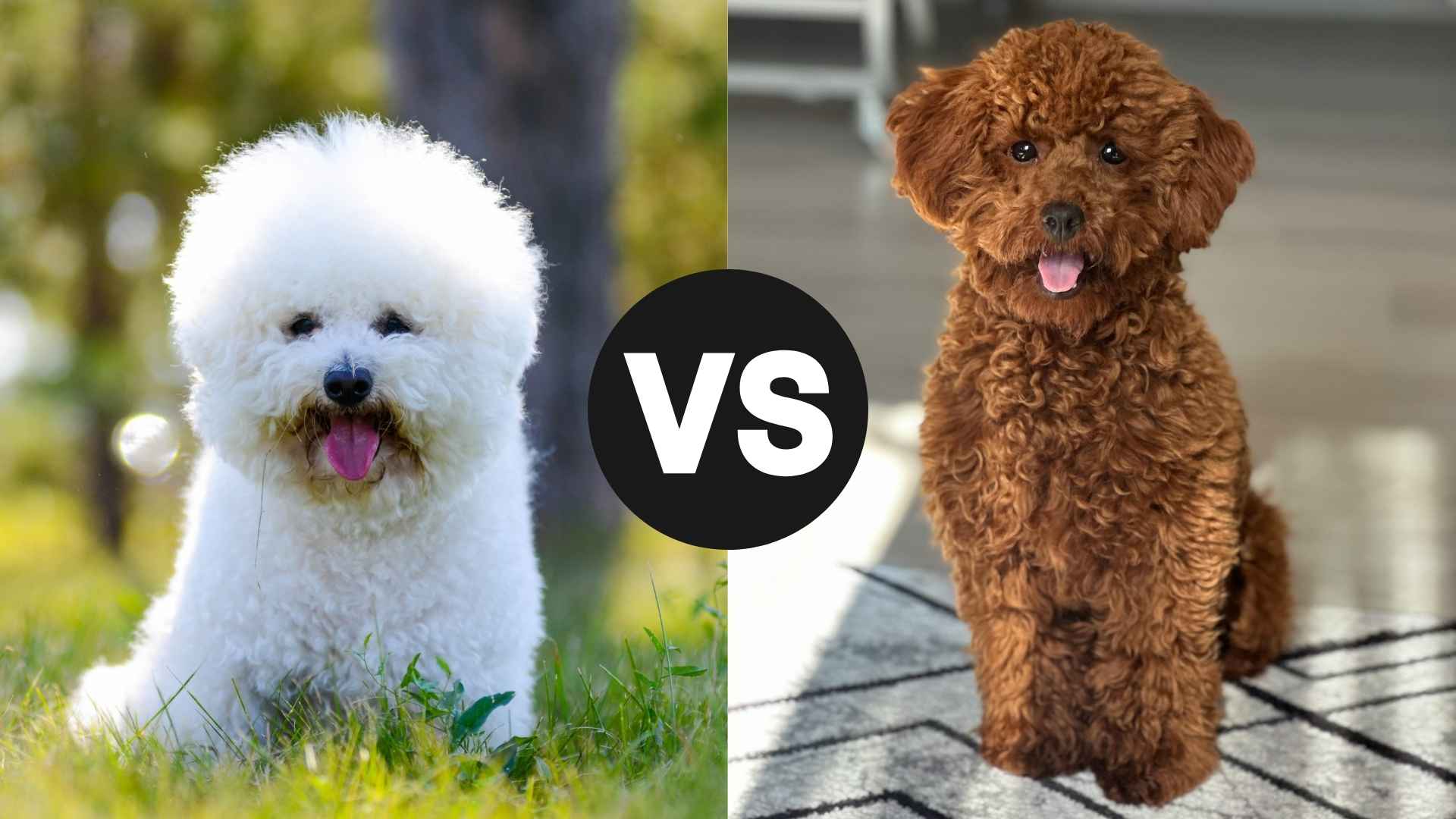Looking for the perfect small, fluffy dog companion but torn between the Bichon Frise and the Toy Poodle? You’re not alone! These two adorable breeds share a lot in common—both are hypoallergenic, super smart, and ridiculously cute. But don’t be fooled—there are some key differences that could make one a better fit for your lifestyle than the other.
The Bichon Frise is all about fun and affection. They’re playful little charmers with a naturally happy-go-lucky attitude, always ready to entertain. Their plush, cloud-like coats scream “cuddle me!” but require regular grooming to keep them looking fresh. If you want a social butterfly that thrives on attention, the Bichon’s got your back.
On the flip side, the Toy Poodle brings serious brains to the table. They’re one of the most intelligent dog breeds, making them highly trainable and eager to please. With their elegant, curly coats and athletic build, they’re as stylish as they are smart. They need mental stimulation and regular activity, so if you love teaching tricks, this pup will be your star student.
So, which one’s your perfect match? Let’s dive deeper into their personalities, grooming needs, and energy levels to find out!
Bichon Frise vs. Toy Poodle: Key Difference
While the Bichon Frise and Toy Poodle may look similar, their personalities, grooming needs, and energy levels set them apart. Bichons are cheerful, social, and love being the center of attention, making them ideal for families and laid-back owners. They have a soft, plush coat that needs frequent grooming but doesn’t require elaborate styling.

Toy Poodles, on the other hand, are highly intelligent, athletic, and eager to learn. They thrive on mental stimulation and structured training, excelling in obedience and agility. Their curly coats require precise grooming, often styled in classic Poodle cuts. If you want a playful lapdog with a carefree attitude, go for a Bichon. But if you prefer a sharp, trainable companion with an energetic spirit, the Toy Poodle is your match!
|
Feature |
Bichon Frise |
Toy Poodle |
|---|---|---|
|
Size |
9-12 inches tall, 10-18 lbs |
9-10 inches tall, 4-6 lbs |
|
Personality |
Cheerful, affectionate, social |
Intelligent, energetic, eager to learn |
|
Trainability |
Easygoing but can be stubborn |
Highly trainable, quick learner |
|
Energy Level |
Moderate, loves playtime |
High, needs mental and physical activity |
|
Grooming Needs |
Fluffy coat, regular brushing but simpler styling |
Curly coat, requires frequent grooming & trims |
|
Shedding |
Minimal, hypoallergenic |
Minimal, hypoallergenic |
|
Exercise Requirements |
30-45 minutes daily |
60+ minutes daily |
|
Intelligence |
Smart but playful |
Extremely intelligent, excels in training |
|
Barking Tendency |
Moderate |
High |
|
Health Issues |
Prone to allergies, hip dysplasia, dental issues, cataracts |
Prone to PRA (progressive retinal atrophy), luxating patella, epilepsy |
|
Lifespan |
12-15 years |
12-16 years |
|
Best For |
Families, companionship, relaxed households |
Active owners, training enthusiasts, agility lovers |
Bichon Frise vs. Toy Poodle: Size
When it comes to size, the Bichon Frise and Toy Poodle may seem similar at first glance, but there are some noticeable differences. While both are small, fluffy breeds that fit perfectly in your lap, their build and weight set them apart. The Bichon Frise is slightly bigger, with a sturdier body, while the Toy Poodle is more petite and delicate.
So, if you’re looking for a compact pup but aren’t sure which one fits your lifestyle better, let’s break it down!
Bichon Frise: Small but Sturdy
Height: 9-12 inches
Weight: 10-18 lbs
Body: Compact, well-balanced, slightly stocky
The Bichon Frise may be a small dog breed, but it’s got a solid, sturdy frame. Unlike the fragile appearance of some toy breeds, Bichons have a bit more substance, making them a great option for families with kids.
They’re still light enough to carry around easily, but they can handle a bit more playful roughhousing without feeling too delicate. If you want a fluffy companion with a little more durability, the Bichon Frise might be the way to go!
Toy Poodle: Tiny and Elegant

Height: 9-10 inches
Weight: 4-6 lbs
Body: Slender, fine-boned, graceful
The Toy Poodle, on the other hand, is much more petite and refined. These little dogs have a delicate frame with long legs that give them an elegant stance. Their lightweight build makes them easy to carry, but they’re also more fragile—so they might not be the best choice for families with very young children. If you love the idea of a tiny, graceful pup that moves with poise and charm, the Toy Poodle is a perfect fit!
Bichon Frise vs. Toy Poodle: Training and Socialization
Both the Bichon Frise and Toy Poodle are intelligent breeds, but when it comes to training and socialization, they have distinct personalities. While one is eager to please, but sometimes stubborn, the other is a quick learner with a sharp mind. If you’re wondering which breed is easier to train and more social, let’s break it down!
Bichon Frise: Playful but Stubborn
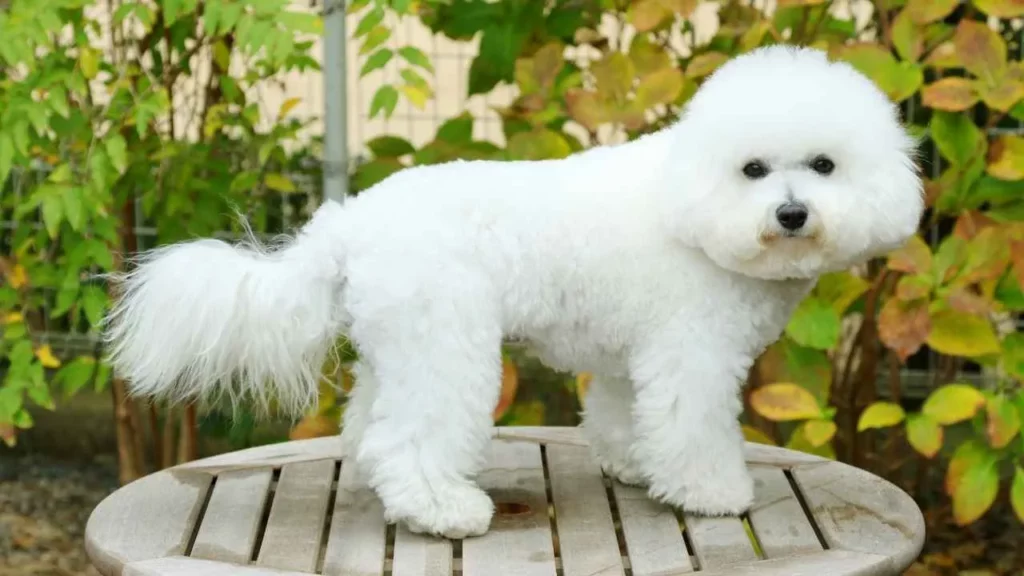
Training Difficulty: Moderate – smart but independent
Socialization: Extremely friendly, loves people and pets
Key Challenge: Can be stubborn, especially with house training
The Bichon Frise is a happy-go-lucky dog that thrives on human companionship. While they’re intelligent and can pick up tricks quickly, they also have an independent streak, making training a bit of a challenge. According to AKC, they respond best to positive reinforcement—treats, praise, and fun training sessions work wonders.
But here’s the catch: house training can take time! Bichons have small bladders and a stubborn side, so consistency is key. On the bright side, they’re incredibly social and love meeting new people and pets, making them fantastic companions in any setting.
Toy Poodle: Training Prodigy but Selective in Socialization
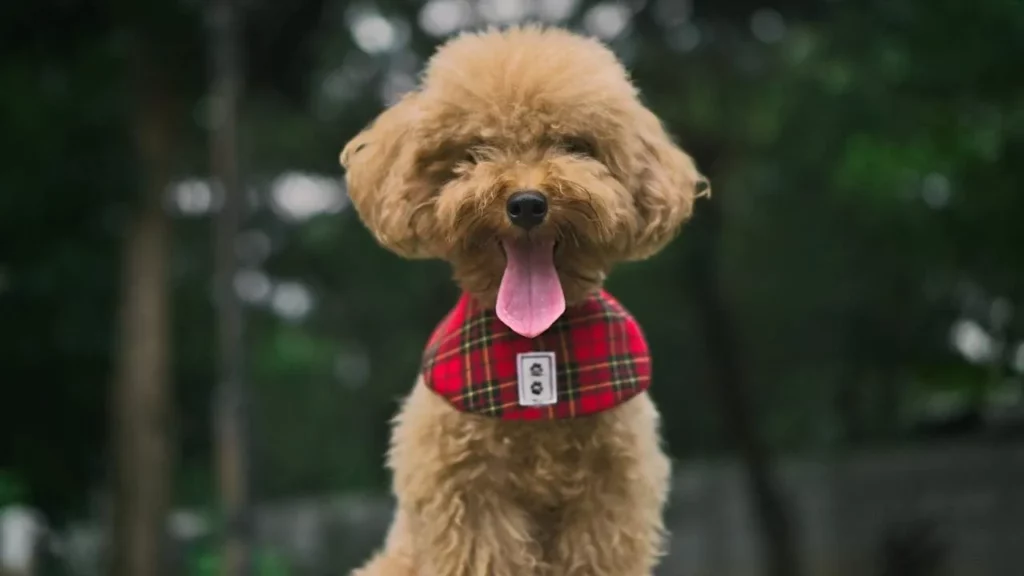
Training Difficulty: Easy – one of the smartest breeds
Socialization: Loyal but may be reserved with strangers
Key Challenge: Needs mental stimulation to stay engaged
The Toy Poodle is one of the easiest breeds to train, states AKC—seriously, they’re brainiacs! They learn commands lightning-fast and love a good challenge, whether it’s obedience training, agility, or puzzle games. If you want a dog that thrives on training, this is the one.
However, socialization of these dogs is crucial—they can be a little reserved with strangers if not exposed to different people and environments early on. They bond closely with their owners and can become clingy, so training them to be independent is just as important as teaching them tricks.
Bichon Frise vs. Toy Poodle: Ancestry and Breeding
Ever wondered where these adorable fluffballs come from? The Bichon Frise and Toy Poodle may share some similarities, but their ancestry and breeding history reveal fascinating differences. While both have European roots and were adored by royalty, their original purposes and development took them on distinct paths. Let’s dive into their histories!
Bichon Frise: The Aristocratic Companion

Origin: Mediterranean region
Ancestry: Descended from the Barbet and Water Spaniel
Purpose: Companion dog for nobility and sailors
The Bichon Frise has a long, glamorous history dating back to the Mediterranean region, where it was adored by aristocrats. Descended from the Barbet (a curly-coated water dog) and small Water Spaniels, the breed was refined into a charming lapdog that became a favorite of European nobility—especially in France, Spain, and Italy.
These fluffy charmers even accompanied sailors on voyages, making them natural entertainers and adaptable companions, states AKC. Over time, their role shifted from royal pets to circus performers due to their intelligence and trainability. Today, they remain cheerful, social, and loving companions that thrive in family settings.
Toy Poodle: A Miniature Version of a Working Dog
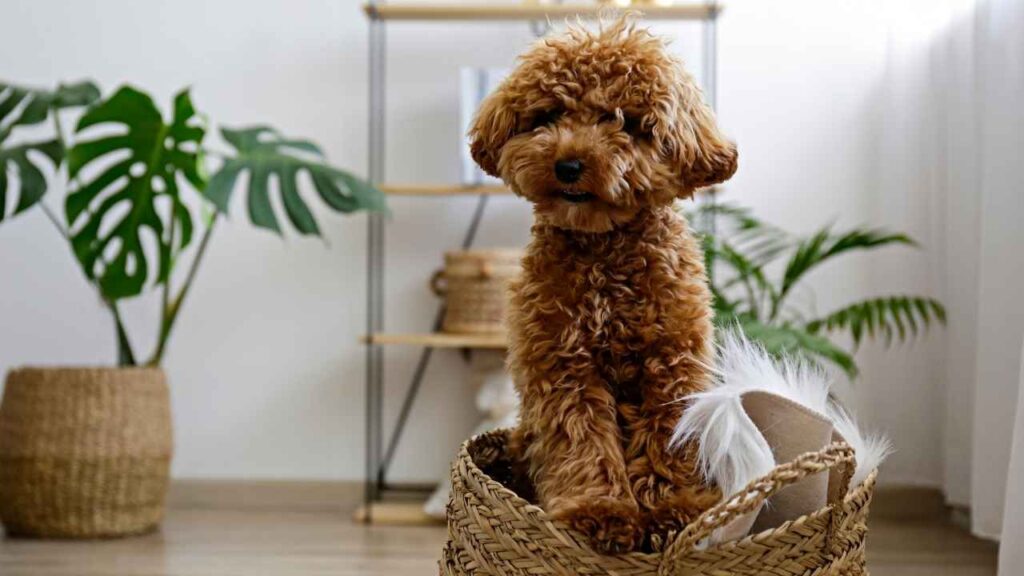
Origin: Germany and France
Ancestry: Miniaturized version of the Standard Poodle
Purpose: Companion dog, circus performer, and fashion statement
The Toy Poodle is a downsized version of the Standard Poodle, which was originally bred in Germany as a duck-hunting retriever. These dogs were highly intelligent and excellent swimmers, but as their popularity spread to France, breeders developed smaller versions—first the Miniature Poodle, then the Toy Poodle.
The Toy variety was bred purely for companionship, making them a favorite among French nobility. Their intelligence and eagerness to perform made them popular circus dogs, and their curly, hypoallergenic coats made them a sought-after pet for elite society. According to PetMD, they are one of the smartest dog breeds, excelling in obedience, agility, and companionship.
Bichon Frise vs. Toy Poodle: Health and Well-Being
When choosing between a Bichon Frise and a Toy Poodle, it’s important to consider their health and overall well-being. While both breeds are generally healthy and long-lived, they do have specific health concerns that potential owners should be aware of. Let’s take a closer look at what to expect!
Bichon Frise: Prone to Allergies but Generally Hardy
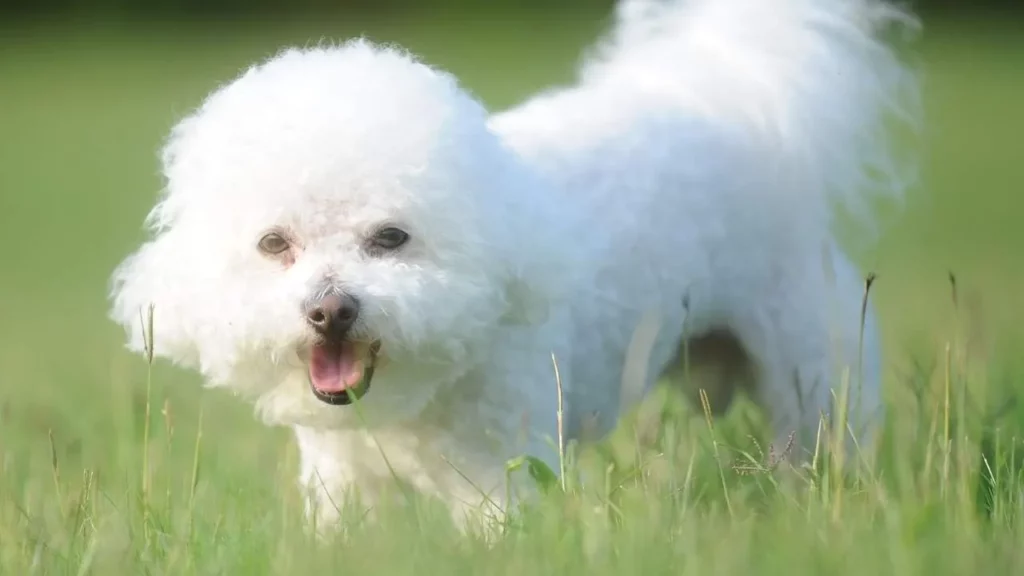
Lifespan: 12–15 years
Common Health Issues: Allergies, bladder stones, hip dysplasia, dental problems
Maintenance Needs: Regular vet checkups, proper diet, and dental care
According to PetMD, the average Bichon Frise life span is 14 to 15 years, but they are prone to allergies and skin conditions. Their sensitive skin means they may develop reactions to certain foods, environmental allergens, or grooming products.
Another common issue is bladder stones, which require a well-balanced diet and plenty of hydration to prevent. Additionally, like many small breeds, they can suffer from dental problems, so regular brushing and professional cleanings are essential. Despite these concerns, with proper care, Bichons remain energetic and lively well into their senior years!
Toy Poodle: Small but Resilient with a Few Genetic Risks

Lifespan: 12–16 years
Common Health Issues: Patellar luxation, progressive retinal atrophy (PRA), epilepsy, hypoglycemia
Maintenance Needs: Mental stimulation, joint care, and eye exams
According to AKC, the Toy Poodle is known for superior intelligence and exceptional learning ability and overall good health, but it does have a few breed-specific vulnerabilities. Their small size makes them prone to patellar luxation (knee dislocation), which can lead to mobility issues if not monitored.
Another concern is progressive retinal atrophy (PRA)—a genetic eye condition that can cause vision loss over time. Additionally, some Toy Poodles may experience epilepsy or hypoglycemia (low blood sugar), especially as puppies. A proper diet, regular exercise, and mental stimulation help keep them in top shape for years to come.
Bichon Frise vs. Toy Poodle: Lifespan
Thinking of bringing home a Bichon Frise or a Toy Poodle? One big factor to consider is life span—after all, you want your furry friend to be with you for as long as possible! Both of these small breeds are known for their long lifespans, but they do have some differences in terms of longevity and health factors that influence their years. Let’s take a closer look!
Bichon Frise: 12–15 Years of Playfulness and Love

Average Lifespan: 12–15 years
Key Factors Affecting Longevity: Diet, exercise, dental care, and genetic health
Common Causes of Aging Issues: Heart disease, cancer, and mobility problems
The Bichon Frise is known for its long life and happy-go-lucky personality well into its senior years. Most Bichons live around 12–15 years, with some even reaching 16 or 17 with excellent care. The biggest threats to their longevity include heart disease, cancer, and mobility issues as they age.
Regular exercise, a healthy diet, and dental hygiene (since small breeds are prone to dental disease) can extend their lifespan and keep them active and lively well into their golden years.
Toy Poodle: A Long-Lived, Intelligent Companion (12–16 Years!)
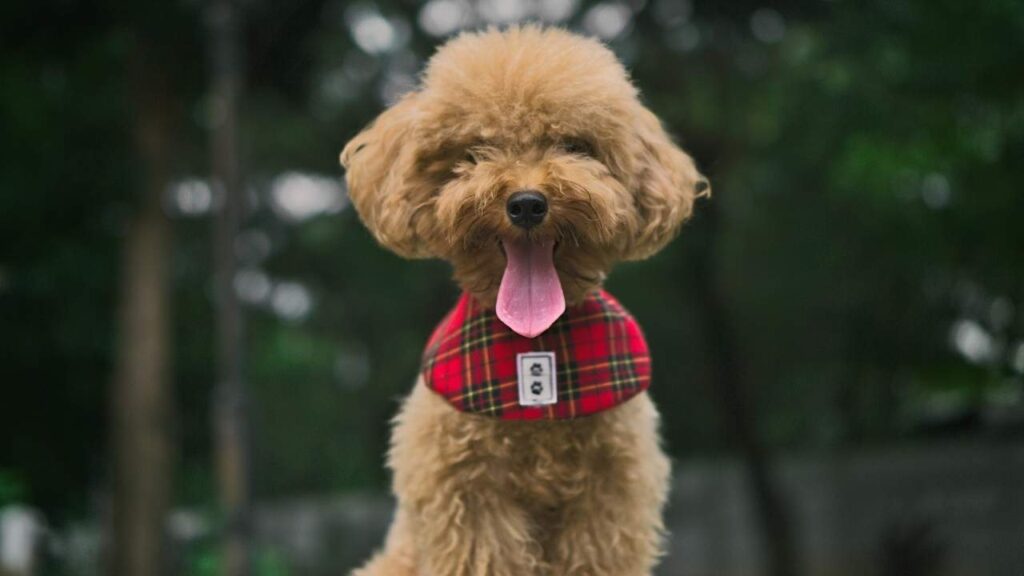
Average Lifespan: 12–16 years
Key Factors Affecting Longevity: Genetics, joint health, and preventive vet care
Common Causes of Aging Issues: Vision loss, arthritis, and neurological conditions
Toy Poodles tend to have one of the longest lifespans among small breeds, typically living 12–16 years, with some even surpassing 18 years! Thanks to their high intelligence and trainability, they often stay mentally sharp well into old age.
However, they are prone to heavy tear staining around eyes, like progressive retinal atrophy (PRA), as well as joint issues like patellar luxation. Regular vet visits, joint supplements, and a mentally stimulating environment can help them stay healthy and active for longer.
Conclusion
Both the Bichon Frise and Toy Poodles are great dogs known for their adorable, affectionate personalities and suitability as companion dogs. These fun-loving, energetic dogs make excellent pets for an active family, as they enjoy playtime and social interactions. The Bichon Frise is considered the national dog of Belgium and has a long history, often accompanying Italian sailors on voyages. On the other hand, the Toy Poodle is a smaller version of the Standard Poodle, known for its intelligence and elegance. When comparing Bichon Frise vs. Toy Poodle, one of the key differences lies in their grooming needs.
In terms of temperament, both of these small dog breeds are highly intelligent, making them easy to train with positive reinforcement. However, house training can be slightly more challenging for the Bichon Frise, as they are known to be a bit stubborn, while the Toy Poodle excels in learning new tricks from a young age. Both breeds thrive in a household with small children, other pets, and other animals, as long as they receive proper socialization. Like most dogs, they can develop separation anxiety, so early training is essential to prevent distress when left alone. They also require at least an hour of exercise daily to maintain a healthy dog lifestyle.
When selecting between the two breeds, potential owners should consider their health risks. The Bichon Frise can be prone to bladder infections, heart defects, and joint issues, while the Toy Poodle may suffer from eye problems and other diseases common in other dog breeds. Choosing a reputable breeder is crucial to ensuring a healthy pup with minimal genetic risks. Both breeds are officially recognized by the American Kennel Club, making it easy to find responsible breeders or even consider rescue organizations.


